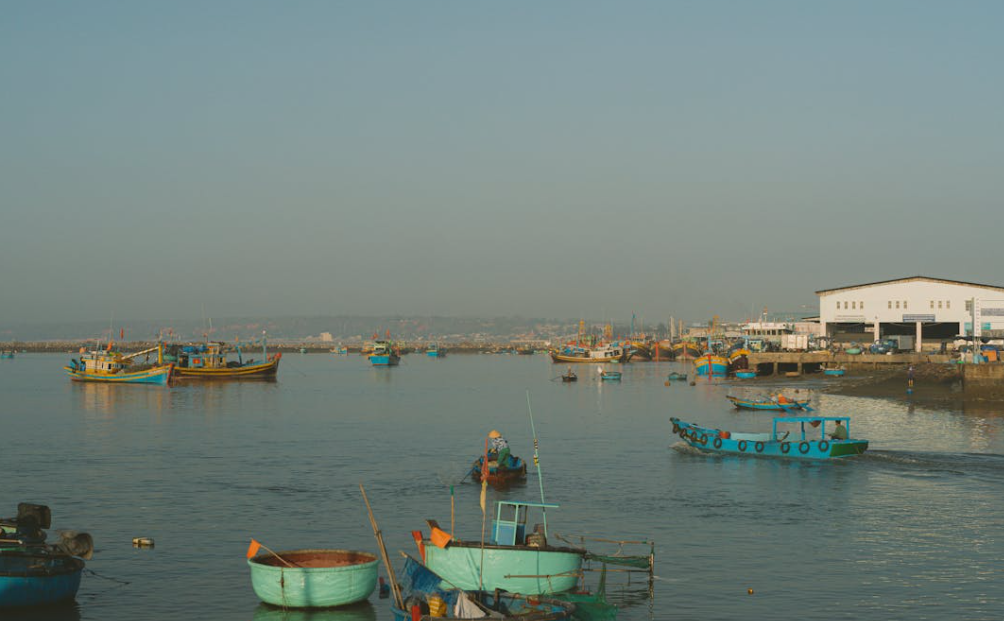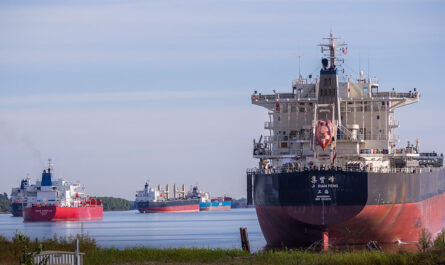The Atlantic Ocean has long served as a critical artery in the global economy, acting as a bustling corridor for maritime trade between Europe, Africa, and the Americas. The shipping routes that crisscross the Atlantic are not just pathways for cargo; they are dynamic, complex systems influenced by economic, political, and environmental factors. This comprehensive guide delves into the economics of Atlantic shipping routes, exploring how they shape global trade, the factors that influence their efficiency and profitability, and the future challenges and opportunities that lie on the high seas.
1. The Strategic Importance of Atlantic Shipping Routes
A. Historical Context
For centuries, the Atlantic has been the stage for maritime exploration and trade. From the Age of Discovery—when explorers like Christopher Columbus and Vasco da Gama first sailed across the ocean—to modern times, the Atlantic has been at the heart of global commerce. Early trade routes facilitated the exchange of spices, textiles, and precious metals, laying the foundations for the modern global economy.
The establishment of transatlantic trade networks not only accelerated economic growth but also spurred cultural exchange and technological advancement. As nations vied for dominance over these lucrative routes, maritime law, naval power, and innovations in shipbuilding all played crucial roles. Today, the legacy of these historical routes continues to influence the way goods are transported across continents.
B. Modern Global Trade and the Atlantic
In the contemporary world, the Atlantic remains one of the busiest and most economically significant shipping regions. It connects major economic hubs such as New York, London, Rotterdam, and Lisbon, facilitating the movement of raw materials, finished goods, and energy resources. Key industries, including automotive, technology, agriculture, and energy, rely heavily on these shipping lanes to transport their products to global markets.
- Major Trade Corridors:
The North Atlantic route, for example, connects the eastern seaboard of the United States with Western Europe, while the South Atlantic route links South America with Africa and Europe. These corridors are crucial for trade in commodities like oil, natural gas, grains, and manufactured goods. - Economic Impact:
The efficient operation of Atlantic shipping routes directly impacts global supply chains and market prices. Disruptions, whether due to geopolitical tensions, weather events, or logistical bottlenecks, can ripple across economies, affecting everything from fuel prices to consumer goods.
2. Factors Influencing the Economics of Atlantic Shipping Routes
A. Fuel Costs and Energy Efficiency
Fuel is one of the largest operational costs for shipping companies, making it a critical factor in the economics of maritime trade. The fluctuating price of oil can significantly affect shipping costs, with higher fuel prices leading to increased freight charges and potentially altering trade routes to optimize fuel consumption.
- Energy Efficiency Technologies:
In response, many shipping companies are investing in energy-efficient technologies and alternative fuels. Innovations such as slow steaming (reducing ship speeds to save fuel), wind-assisted propulsion systems, and the use of liquefied natural gas (LNG) are becoming more prevalent. These efforts not only lower operational costs but also contribute to reducing the environmental impact of shipping.
B. Geopolitical and Regulatory Influences
Atlantic shipping routes are also shaped by geopolitical factors and international regulations. Political stability, trade agreements, and maritime security policies play crucial roles in determining the viability and safety of these routes.
- Trade Policies and Tariffs:
Changes in trade policies, such as tariffs and sanctions, can alter shipping volumes and routes. For instance, shifts in trade relations between major economies can lead to rerouting of vessels or changes in the demand for shipping services along specific corridors. - Maritime Security:
Piracy, territorial disputes, and military conflicts can disrupt shipping lanes, forcing companies to invest in security measures or reroute their vessels to avoid high-risk areas. - Environmental Regulations:
International regulations, such as the International Maritime Organization’s (IMO) guidelines on sulfur emissions, require ships to adopt cleaner fuels or install scrubbers. While these measures help protect the environment, they also entail additional costs that can impact shipping economics.
C. Infrastructure and Port Efficiency
The efficiency of ports and maritime infrastructure along the Atlantic plays a pivotal role in determining shipping costs and turnaround times. Modern, well-equipped ports with advanced logistics and efficient customs processes reduce delays and minimize the cost of maritime trade.
- Port Modernization:
Investments in port infrastructure, such as automated cargo handling systems, improved storage facilities, and enhanced connectivity with land transport, directly contribute to the efficiency of shipping routes. - Intermodal Connectivity:
The integration of shipping with rail, road, and air transport ensures smooth transitions for cargo, reducing the overall time and cost of moving goods from one part of the world to another. - Digitalization and Smart Ports:
The adoption of digital technologies, including blockchain for tracking shipments, real-time data analytics, and Internet of Things (IoT) devices, is revolutionizing port operations. These advancements improve transparency, reduce bottlenecks, and facilitate better coordination among stakeholders.
D. Market Demand and Global Economic Trends
The demand for shipping services along the Atlantic is directly linked to global economic trends. As economies grow, the volume of goods traded across continents increases, driving demand for efficient and reliable shipping routes.
- Commodity Markets:
Fluctuations in global commodity prices, such as oil, natural gas, and agricultural products, have a significant impact on shipping volumes. High demand for these commodities often results in increased shipping activity and higher freight rates. - Consumer Trends:
The rise of e-commerce and globalized supply chains has transformed the shipping industry. Faster delivery times and increased consumer expectations require shipping companies to optimize their routes and logistics. - Economic Cycles:
Periods of economic growth lead to higher trade volumes, while recessions can result in reduced shipping demand. These cycles influence pricing, capacity, and investment decisions within the maritime industry.
3. The Role of Technological Innovation
A. Digitalization of Shipping Operations
The advent of digital technology has transformed the shipping industry, making operations more efficient, transparent, and resilient. Digitalization encompasses a wide range of innovations that streamline processes and improve the overall performance of shipping routes.
- Smart Cargo Tracking:
Real-time tracking systems allow shippers to monitor the progress of their vessels, predict delays, and optimize routing. This not only improves customer satisfaction but also enhances the efficiency of global supply chains. - Automation and Robotics:
Automation in port operations, including robotic cargo handling and automated customs processes, has significantly reduced turnaround times and labor costs. - Predictive Analytics:
By analyzing historical data and real-time information, predictive models can forecast trends in fuel consumption, shipping volumes, and potential disruptions. This enables shipping companies to make proactive decisions and adapt to changing conditions. - Blockchain Technology:
Blockchain is emerging as a powerful tool for ensuring the integrity and transparency of shipping transactions. By creating an immutable ledger for every shipment, blockchain helps reduce fraud, streamline paperwork, and build trust among global trading partners.
B. Environmental Technologies
As environmental concerns become increasingly urgent, the shipping industry is investing in green technologies to reduce its ecological footprint.
- Alternative Fuels:
The use of alternative fuels such as LNG, hydrogen, and biofuels is on the rise. These fuels produce fewer emissions than traditional heavy fuel oil, contributing to cleaner air and reduced carbon footprints. - Emission Control Systems:
Technologies like scrubbers and catalytic converters are being installed on ships to reduce harmful emissions. These systems help shipping companies comply with international environmental regulations and contribute to global sustainability efforts. - Energy Management Systems:
Advanced energy management systems enable vessels to optimize fuel usage, monitor performance, and reduce energy waste. These systems are integral to achieving both cost savings and environmental goals.
4. Challenges and Future Trends in Atlantic Shipping
A. Navigating Geopolitical Uncertainties
The Atlantic shipping routes operate in a complex geopolitical landscape. Political tensions, trade disputes, and regulatory changes can all disrupt shipping activities. In the future, navigating these uncertainties will require a combination of diplomatic engagement, flexible routing strategies, and robust legal frameworks.
- International Cooperation:
Strengthening international partnerships and agreements is crucial to ensuring that shipping routes remain open and secure. Collaborative efforts between governments, industry stakeholders, and international organizations will be key to managing geopolitical risks. - Adaptive Strategies:
Shipping companies must remain agile, with contingency plans in place to quickly adapt to geopolitical shifts and changing regulatory environments.
B. Balancing Growth with Sustainability
As global trade continues to expand, the pressure on shipping routes will only increase. Balancing this growth with the need to protect the environment is one of the greatest challenges facing the maritime industry today.
- Investment in Green Technologies:
Continued investment in sustainable technologies is essential. The development of more efficient vessels, the adoption of alternative fuels, and the implementation of comprehensive waste management systems will play a vital role in reducing the environmental impact of shipping. - Sustainable Practices:
Embracing sustainable practices—such as slow steaming, route optimization, and improved logistics—will be necessary to ensure that growth does not come at the expense of the planet. - Consumer and Regulatory Pressure:
As consumers become more environmentally conscious and governments enforce stricter regulations, shipping companies will need to innovate continuously to remain competitive while adhering to sustainability standards.
C. The Impact of Technological Disruptions
The rapid pace of technological advancement is both an opportunity and a challenge for the shipping industry. On one hand, innovations can significantly improve efficiency and reduce costs. On the other hand, the need to continuously upgrade systems and invest in new technologies can strain resources.
- Digital Transformation:
The ongoing digital transformation of shipping operations will likely lead to increased automation, improved data analytics, and more robust cybersecurity measures. These changes are expected to enhance operational efficiency and resilience against disruptions. - Cost of Innovation:
While technology offers many benefits, the high cost of implementing cutting-edge systems remains a barrier for some shipping companies, particularly smaller operators. Balancing the cost of innovation with the need for efficiency will be a key challenge in the coming years. - Integration Challenges:
Integrating new technologies into established operations requires careful planning and collaboration. Ensuring that all stakeholders are on board and that systems can communicate effectively is essential for the successful digital transformation of the industry.
5. The Broader Economic Impact of Atlantic Shipping Routes
A. Boosting Global Trade and Commerce
Atlantic shipping routes are vital arteries for global trade. They facilitate the exchange of goods and services between continents, driving economic growth and fostering international relationships. The efficiency and reliability of these routes directly affect global supply chains, influencing everything from manufacturing to consumer retail.
- Trade Volumes:
The vast majority of international trade is conducted by sea. The Atlantic routes connect key markets, ensuring that raw materials, finished goods, and commodities are delivered efficiently and cost-effectively. - Economic Connectivity:
These shipping lanes serve as critical links between major economic hubs, such as New York, London, and Rotterdam. Their smooth operation is essential for maintaining economic stability and growth. - Job Creation:
The shipping industry supports millions of jobs worldwide, from maritime labor and logistics to port management and ancillary services. The health of the Atlantic shipping routes directly influences employment and economic prosperity on a global scale.
B. Influencing Market Dynamics and Pricing
The efficiency of Atlantic shipping routes has a direct impact on the pricing and availability of goods. Delays, disruptions, or increased operational costs can ripple through the supply chain, affecting prices for consumers and businesses alike.
- Freight Rates:
Fluctuations in fuel prices, regulatory changes, and geopolitical tensions can influence freight rates, impacting the cost of shipping goods across continents. - Supply Chain Resilience:
Efficient shipping routes help stabilize supply chains, ensuring that goods are delivered on time and in good condition. This reliability is crucial for industries that depend on timely deliveries, such as retail and manufacturing. - Economic Competitiveness:
Countries with well-maintained shipping infrastructure tend to have a competitive advantage in global trade. The efficiency of the Atlantic routes plays a significant role in maintaining the economic competitiveness of nations along these corridors.
6. Future Prospects and Innovations in Atlantic Shipping
A. Embracing a Digital Future
The future of Atlantic shipping routes lies in embracing digital transformation and technological innovation. Advancements in artificial intelligence, automation, and data analytics are set to revolutionize maritime trade, making shipping operations more efficient and resilient.
- Smart Shipping:
The integration of IoT devices and smart sensors can provide real-time data on vessel performance, weather conditions, and cargo status, enabling more agile decision-making and route optimization. - Blockchain and Digital Ledger Technologies:
These technologies can enhance transparency and security in the shipping industry, streamlining documentation and reducing the risk of fraud or errors. - Autonomous Vessels:
The development of autonomous ships promises to further reduce operational costs and improve safety on the high seas. As these vessels become more prevalent, they may significantly reshape global trade dynamics.
B. Environmental Sustainability and Green Shipping
With growing awareness of environmental issues, the shipping industry is under increasing pressure to reduce its ecological footprint. Sustainable practices and green technologies are at the forefront of efforts to make Atlantic shipping routes more eco-friendly.
- Alternative Fuels:
The adoption of LNG, hydrogen, and biofuels is expected to become more widespread as shipping companies strive to lower emissions. - Energy Efficiency:
Innovations in ship design and propulsion systems are improving fuel efficiency, reducing the environmental impact of maritime transport. - Carbon Offsetting and Regulatory Compliance:
International regulations are driving the industry toward carbon neutrality. Efforts such as carbon offsetting and investments in renewable energy sources are critical to meeting these goals.
C. Collaborative Global Efforts
The challenges and opportunities associated with Atlantic shipping routes require a coordinated global response. International collaboration among governments, industry stakeholders, and environmental organizations will be key to shaping the future of maritime trade.
- Global Policy Frameworks:
The development of unified regulations and standards for shipping, environmental protection, and digital security will help ensure that trade flows smoothly across borders. - Joint Research Initiatives:
Collaborative research projects can drive innovation, share best practices, and develop sustainable solutions that benefit the entire maritime industry. - Public-Private Partnerships:
These partnerships can accelerate the adoption of new technologies and facilitate investments in infrastructure, ensuring that Atlantic shipping routes remain competitive in the global marketplace.
7. Conclusion: Charting a New Course on the High Seas
Atlantic shipping routes are much more than passageways for cargo—they are the lifeblood of global trade, dynamic conduits that shape economies, influence market dynamics, and support millions of livelihoods worldwide. The complex interplay of geological forces, technological innovation, environmental sustainability, and international collaboration makes the study of these shipping lanes a fascinating and crucial endeavor.
As we look to the future, the continued evolution of the Atlantic shipping industry will depend on our ability to balance economic growth with environmental stewardship. Embracing digital transformation, investing in green technologies, and fostering global cooperation are essential steps toward creating a sustainable maritime future. In an era marked by rapid technological change and shifting geopolitical landscapes, the health and efficiency of Atlantic shipping routes will remain a key determinant of global economic stability and prosperity.
For industry stakeholders, policymakers, and global citizens alike, understanding the economics of these vital corridors is more than an academic exercise—it is a pathway to ensuring that the movement of goods and ideas across the high seas continues to drive innovation, growth, and sustainable development. By investing in the future of Atlantic shipping, we not only support the global economy but also contribute to a more connected, resilient, and sustainable world.
As we navigate these complex waters, one thing is clear: the future of global trade will be shaped by our ability to adapt, innovate, and collaborate across borders. The Atlantic, with its vast expanse and deep-rooted history, stands as a testament to the power of human ingenuity and the enduring spirit of exploration. Its shipping routes continue to evolve, driven by the same forces that once propelled explorers across uncharted waters—a relentless pursuit of progress, connectivity, and a better tomorrow.
In the end, the journey of Atlantic shipping is a microcosm of the global economy itself—a constantly shifting, interconnected network that binds nations, industries, and people together. By understanding its economics, we gain not only insights into the workings of global trade but also a deeper appreciation for the delicate balance between human ambition and the natural world. This balance is essential for charting a sustainable course on the high seas, ensuring that the legacy of Atlantic shipping routes endures for generations to come.



